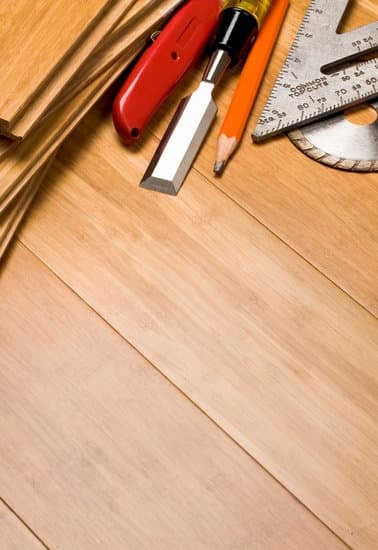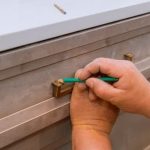In today’s digital age, having a strong mobile phone reception at home is crucial for staying connected and accessing important information. Whether you rely on your phone for work, communicating with loved ones, or simply browsing the internet, experiencing poor signal strength can be frustrating and inconvenient.
This article will explore various factors that affect mobile phone reception and provide practical tips and solutions to improve it. By implementing these strategies, you’ll be able to enjoy reliable connectivity and eliminate the frustration of dropped calls or slow internet speeds.
In our increasingly interconnected world, a strong mobile phone reception at home has become essential for both personal and professional purposes. Clear communication is vital in everyday life, whether it’s making important business calls, staying connected with friends and family, or accessing emergency services if needed. Additionally, with the rise of remote working and online learning, a reliable mobile connection ensures seamless communication and access to vital resources from the comfort of your own home.
However, understanding the factors that affect mobile phone reception can assist in troubleshooting any issues you may encounter. Challenges such as distance from cell towers, interference from electrical devices or buildings, and obstructions like trees or mountains can all contribute to weakened signals. Assessing your current mobile phone reception is an important step in identifying areas of strength and weakness within your home. By doing so, you can pinpoint potential causes of poor reception and take targeted steps towards improvement.
Next in this article, we will delve deep into these factors affecting mobile phone reception in order to gain a better understanding of the challenges faced by users. Stay tuned as we explore strategies to overcome these obstacles and enhance your mobile phone experience at home.
Understanding the Factors Affecting Mobile Phone Reception
Mobile phone reception can often be a cause of frustration for many individuals, particularly when it comes to receiving reliable signals at home. In order to address this issue effectively, it is important to understand the factors that can affect mobile phone reception. By exploring these challenges, users can gain a better understanding of why their reception may be weak and determine the most appropriate solutions.
Cellular Network Coverage
One crucial factor that affects mobile phone reception is the quality and strength of the cellular network coverage in a particular area. The strength of the cell signal depends on proximity to cell towers, which transmit and receive signals. If a user lives far away from cell towers or in an area with limited infrastructure, they are more likely to experience weak reception. Additionally, natural barriers like mountains or tall buildings can obstruct the signal, resulting in poor connectivity.
Interference
Interference from various sources also plays a significant role in affecting mobile phone reception. Electronic devices such as microwaves, baby monitors, or even neighboring Wi-Fi networks can interfere with cellular signals, leading to dropped calls or slow internet speeds. Additionally, certain building materials like metal or concrete can block signals and reduce signal strength indoors.
Weather Conditions
It’s important to note that weather conditions can also impact mobile phone reception. During severe storms or heavy rainfall, signals may weaken due to atmospheric interference. This is because raindrops and moisture absorb radio frequency signals, causing attenuation and reducing signal strength.
By understanding these challenges and how they can affect mobile phone reception, individuals are better equipped to find effective solutions for improving their signal strength at home. Whether it’s through adjusting positioning or utilizing external antennas, addressing these factors will help users enjoy reliable connectivity for their mobile phones within their homes.
Assessing Your Current Mobile Phone Reception
Before implementing any solutions to improve mobile phone reception at home, it is important to first assess your current reception and identify the strengths and weaknesses. This will help you understand the specific areas that require improvement and determine the most effective solutions for your situation.
One way to assess your mobile phone reception is by examining the signal strength indicator on your device. Most smartphones have a visual representation of signal strength, usually displayed in bars or dots. Take note of how many bars or dots are present in different areas of your home, as well as any fluctuations in signal strength throughout the day.
It is also helpful to test for call quality and data speed in various parts of your home. Make calls from different rooms or areas and listen for any disruptions, dropped calls, or poor sound quality. Similarly, try using data-intensive applications or websites to gauge the speed and reliability of your internet connection. Note any instances of slow loading times, buffering, or disconnections.
To further evaluate your mobile phone reception, consider using network diagnostic tools or apps that can provide detailed information about signal strength, network type (e.g., 3G, 4G), signal-to-noise ratio, and other relevant metrics. These tools can give you a more accurate assessment of your current reception and help you pinpoint areas where improvement is needed.
Overall, assessing your current mobile phone reception will give you a clear understanding of the strengths and weaknesses in signal coverage within your home. This information will be invaluable when determining which solutions to implement to enhance your mobile phone reception.
| Assessment Metrics | Description |
|---|---|
| Signal Strength Indicator | Visual representation on devices showing signal strength. |
| Call Quality | Evaluating disruptions, drops, and sound quality during calls. |
| Data Speed | Testing internet connection speed and reliability. |
| Network Diagnostic Tools | Tools or apps providing detailed information about signal metrics. |
Identifying Potential Causes of Poor Reception
Interference Factors
One of the main culprits behind poor mobile phone reception is interference. Interference occurs when other electronic devices or signals disrupt the cellular signal, resulting in dropped calls, slow data speeds, and unreliable connections. Identifying the potential sources of interference can help you troubleshoot and improve your mobile phone reception.
Common sources of interference include Wi-Fi routers, cordless phones, baby monitors, microwave ovens, and even certain household appliances like televisions and refrigerators. These devices emit electromagnetic waves that can interfere with the cellular signal. Try moving your mobile phone away from such devices or turning them off temporarily to see if it improves your reception.
Another significant source of interference is buildings with thick walls or metal frames. These structures can block or weaken the signal, especially in areas that are far away from cell towers. If you live in a heavily-built area or have a home with thick walls or metal components, this could be a contributing factor to your poor mobile phone reception.
Obstacles to Signal Strength
Beyond interference from electronic devices, physical obstacles can also hinder mobile phone reception. Trees, tall buildings, mountains, and other geographical features can absorb or deflect the cellular signal before it reaches your device. Even weather conditions such as heavy rain or snowfall can impact reception quality.
If you live in a rural area surrounded by natural obstacles like hills or dense forests, it is likely that your mobile phone reception may be weaker compared to urban areas where there are fewer physical barriers. Identifying these obstacles and understanding their impact on your reception is crucial when seeking solutions to improve mobile phone signal at home.
In addition to natural obstacles, man-made structures like bridges or tunnels can also disrupt cellular signals. If you frequently experience poor reception while traveling through tunnels or underpasses on your daily commute, it is worth noting that these structures are designed to withstand various forces but are not necessarily conducive to uninterrupted mobile phone reception. Being aware of these obstacles and planning accordingly can help ensure a seamless mobile experience even in challenging areas.
Tips for Improving Mobile Phone Reception
Mobile phone reception can sometimes be a frustrating issue to deal with, especially when it affects our ability to make calls or access data from the comfort of our own homes. Fortunately, there are several simple solutions that can help improve mobile phone reception. By implementing these tips, you can enjoy a stronger and more reliable signal at home.
One effective tip is to position your phone correctly. Finding the “sweet spot” in your home where the signal is strongest can make a significant difference. Experiment with different areas of your house to see where the reception is best. Additionally, try adjusting the position and angle of your phone or even using a hands-free device to avoid interference from your body.
Another useful solution is optimizing your network settings. Most smartphones have an option to manually select preferred networks or change network modes. By accessing these settings, you can tap into maximum signal strength by selecting a specific network provider or switching between 2G, 3G, and 4G modes.
Upgrading your phone’s firmware is another way to enhance connection performance. Manufacturers often release firmware updates that address software bugs and improve overall system stability, which can indirectly affect mobile phone reception. Make sure to regularly check for firmware updates and install them when available.
In addition to these solutions, considering external antennas and network boosters can significantly boost signal reception in areas with poor coverage or dead zones. External antennas are designed to capture weak signals and amplify them for better reception inside your home. Network boosters work similarly by capturing existing signals outside your house, boosting them, and then redistributing them indoors.
Lastly, utilizing Wi-Fi calling and considering a signal extender are excellent options for enhancing indoor coverage. Wi-Fi calling allows you to make calls using your internet connection instead of relying solely on cell tower signals.
This feature is particularly helpful if you have a strong Wi-Fi connection but poor cellular reception in certain parts of your home. Signal extenders, on the other hand, expand the range of your mobile phone reception by capturing the signal and broadcasting it to areas with weak coverage.
By implementing these simple solutions, you can significantly improve mobile phone reception at home. Whether it’s finding the sweet spot, optimizing network settings, upgrading firmware, using external antennas or boosters, clearing obstacles, utilizing Wi-Fi calling, or considering a signal extender – there are various options available to suit your specific needs and improve your overall mobile phone experience.
DIY Solutions
Mobile phone users who are looking for cost-effective solutions to improve their mobile phone reception at home can explore the option of constructing homemade signal boosters. These DIY solutions are simple, budget-friendly alternatives that can help enhance signal strength and overcome poor reception issues.
One popular DIY solution is the Tin Can Signal Booster. This method involves repurposing a tin can into an antenna extension that can amplify the mobile phone’s signal. By cutting and attaching a specific size of tin can to the phone’s internal antenna, users can see noticeable improvements in signal strength.
Another DIY solution is using aluminum foil reflectors. By strategically placing sheets of aluminum foil around the area where the mobile phone is used most frequently, users can harness reflections to improve signal reception. The aluminum foil works by bouncing off stray signals and channeling them towards the device.
For those on a budget, adding a soda can antenna is a simple yet effective DIY solution. By carefully cutting and attaching a soda can to the phone’s external antenna or back cover, users can extend and enhance their device’s signal reception capabilities.
While these homemade signal boosters may not be as powerful as professional-grade solutions, they offer an affordable option for improving mobile phone reception at home. It is important to note that results may vary depending on individual circumstances and environmental factors. Experimenting with different homemade solutions and finding what works best for your specific situation is recommended.
Seeking Professional Help
When all else fails and you’re still struggling with poor mobile phone reception at home, it may be time to seek professional assistance. Consulting with experts in the field can provide valuable insights and solutions to improve your signal strength. Here are two options for seeking professional help:
- Engaging with Mobile Network Providers: One of the first steps to take when experiencing poor mobile phone reception is to contact your mobile network provider. They have a vested interest in ensuring their customers have strong signal coverage, so they will often provide advice and guidance on how to improve your reception.
They may recommend specific settings or features on your phone that can optimize signal strength, or they may offer suggestions for external antennas or boosters that are compatible with their network. - Hiring Professional Installers: Another option for seeking professional help is to hire installers who specialize in improving mobile phone reception. These professionals have the knowledge and expertise to assess your specific situation and recommend the most effective solutions.
They can conduct a thorough analysis of your home’s layout, identify potential sources of interference, and determine the best placement for antennas or boosters. By working with professionals, you can ensure that you’re implementing the most reliable and efficient solutions tailored to your specific needs.
Conclusion
In conclusion, by following the tips and implementing the solutions outlined in this article, you can significantly improve your mobile phone reception at home. The importance of reliable mobile phone reception cannot be understated, as it allows for clear and uninterrupted communication with others. It is crucial to understand the factors affecting mobile phone reception, assess your current reception strength, and identify potential causes of poor reception.
By positioning your phone correctly and optimizing your network settings, you can tap into maximum signal strength. Upgrading your phone’s firmware and utilizing external antennas or network boosters are also effective solutions for boosting signal reception. Additionally, clearing obstacles and enhancing indoor coverage with Wi-Fi calling can greatly improve your mobile phone reception.
For those who prefer a DIY approach, constructing homemade signal boosters such as tin can signal boosters or aluminum foil reflectors can be cost-effective options. However, seeking professional help from mobile network providers or hiring professional installers may be necessary for more complex cases where additional expertise is required.
Overall, with the right strategies and solutions tailored to your specific needs, you can enjoy reliable mobile phone reception at home. Implementing these measures will ensure that you have consistent connectivity on your devices without experiencing frustration due to dropped calls or low signal strength.
Frequently Asked Questions
Why is my mobile signal so bad in my house?
There can be several reasons why your mobile signal is bad in your house. Firstly, the location of your house might have a poor network coverage from your service provider. Geographical factors like being surrounded by hills or tall buildings can hinder the signals from reaching inside your house effectively.
Additionally, the construction material of your house could also contribute to signal interference, especially if it contains metal-reinforced walls or energy-efficient windows that reduce signal penetration. The distance between your house and the nearest cell tower can also impact the signal strength, as further distances may result in weaker reception.
How to increase the signal strength of mobile phone?
If you want to increase the signal strength of your mobile phone, there are a few steps you can take. First and foremost, try relocating to an area within your house where the signal is stronger, such as near a window or on a higher floor. This can often improve reception as it minimizes potential obstructions between your phone and the cell tower.
Additionally, you may consider using a cellular signal booster or repeater device that amplifies and enhances weak signals within your home. These devices typically consist of an external antenna placed outside to capture stronger signals followed by an amplifier that boosts the received signals for distribution indoors.
What does * 3370 do?
*3370 refers to a specific code used on some mobile phones which activates Enhanced Full Rate (EFR) audio codec. When activated, this codec helps improve voice quality during calls but utilizes additional battery life in doing so since it consumes more power than regular speech codecs.
It’s worth noting that this code is not universally applicable to all mobile phones and its impact on call quality may vary depending on individual devices and networks. Therefore, it’s recommended to check if *3370 works on your particular phone model before using it with any expectations of noticeable enhancement in call audio clarity.

I’m thrilled to have you here as a part of the Remodeling Top community. This is where my journey as an architect and remodeling enthusiast intersects with your passion for transforming houses into dream homes.





